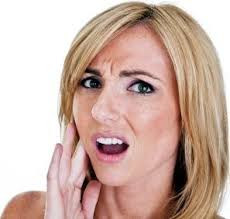 19th Aug 2015
19th Aug 2015
Treatment for Temporomandibular Joint Disorder (TMD)
Temporomandibular joint (TMJ) pain can be a significant
problem in a selected number of patients referred to  physical therapy. More than 10 million Americans complain of
jaw pain. The temporomandibular joint
(TMJ) guides jaw movement. Problems with the TMJ are known as temporomandibular
joint disorder or dysfunction (TMD).
TMD has a number of causes: bad posture, chronic clenching, poor teeth
alignment, fracture, surgery or what is called “lockjaw”. What is so insidious about TMD is it can
cause a whole host of other problems, as the pain radiates to other areas. TMD can cause jaw pain, fatigue, difficulty
opening the mouth, ringing in the ears.
I know I just threw two lists at you, but I did so because it’s
important to see how easily TMD can arise and how widely it can negatively
impact patients. We recently had a
patient come into the office on her own referral. Her doctor had prescribed her a night guard,
but she was still experiencing pain. She
was wondering if there was any more that could be done besides receiving a
steroid shot or considering surgery. And
to that, the answer is, yes! Physical therapy can absolutely help treat TMD and
help patients find relief.
physical therapy. More than 10 million Americans complain of
jaw pain. The temporomandibular joint
(TMJ) guides jaw movement. Problems with the TMJ are known as temporomandibular
joint disorder or dysfunction (TMD).
TMD has a number of causes: bad posture, chronic clenching, poor teeth
alignment, fracture, surgery or what is called “lockjaw”. What is so insidious about TMD is it can
cause a whole host of other problems, as the pain radiates to other areas. TMD can cause jaw pain, fatigue, difficulty
opening the mouth, ringing in the ears.
I know I just threw two lists at you, but I did so because it’s
important to see how easily TMD can arise and how widely it can negatively
impact patients. We recently had a
patient come into the office on her own referral. Her doctor had prescribed her a night guard,
but she was still experiencing pain. She
was wondering if there was any more that could be done besides receiving a
steroid shot or considering surgery. And
to that, the answer is, yes! Physical therapy can absolutely help treat TMD and
help patients find relief.
Physical Therapy Treatments for TMJ
Your physical therapist can help restore the natural movement of your jaw and decrease your pain, using a customized treatment plan using the following:
- Posture education: This one’s important for most people, as we spend a lot of time in the car or at our desks. The physical therapist will assess a patient’s posture in most day-to-day activities and adjust as necessary. For example, if a patient sits at their desk with an increased forward position, this means they’re placing greater strain on the muscles underneath their chin, causing the lower jaw to pull back and the mouth to be in an open position, even when resting, and increasing the strain on the TMJ.
- Manual Therapy: Manual therapy will help increase movement and relieve pain in tissues and joints. The pt will access the TMJ both on the outside and inside of the mouth, making sure to break up any adhesions that may have been caused by the constant injury of TMD. The pt may also stretch the jaw in order to restore normal joint and muscle flexibility.
- Ultrasound: Ultrasound therapy uses sound waves to create a gentle heat that increases blood circulation to patient’s deep tissues, while also helping to decrease pain and swelling.
- Tens: Transcutaneous electrical nerve stimulation (TENS), which is the application of a mild electrical current to the skin over the jaw joint. This electrical current interferes with the body's pain signals. TENS relaxes muscles, improves blood circulation, and relieves pain.
- Low-level Laser Therapy (LLLT): The low level lasers of LLLT are able to alter cellular function and have been found to be an effective treatment for TMJ by a recent study published in the Scandinavian Rheumatology Journal. This non-invasive treatment reduces pain, inflammation and also increases flexibility of the jaw joint.
TMD has a wide negative impact, effecting a patient’s home and work life. Luckily, many physical therapy modalities can be used to offset the symptoms of TMD. Research has shown that when used in conjunction with posture training and manual therapy, patients that receive modalities as part of their treatment plan felt relief for up to 2 months after treatment. And with the non-invasive nature of the treatments, physical therapy should be one of the first things prescribed for patients with TMD.
For more information about physical therapy modalities and treatment options see our Blog at ProHealthcareProducts.com





